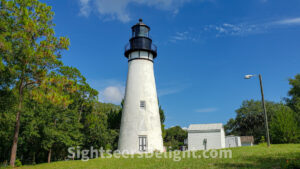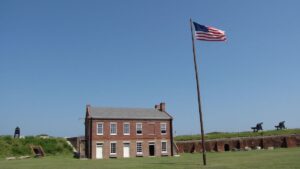The Amelia Island Museum of History provides visitors with an overview of the island’s history, starting with its Native American occupants and continuing through modern times. The museum is located in the former Nassau County jail.
32034
The Fernandina Beach Marine Welcome Center & Shrimping Museum gives visitors to Amelia Island a quick overview of the shrimping industry and its impact on the region. The Amelia Island Museum of History began running the museum after the city of Fernandina Beach approached the museum in 2010. The small museum, located on the waterfront in downtown Fernandina Beach, includes information about the shrimping industry and the families who played a vital role in its development. Theor efforts helped make the state “the birthplace of the modern shrimping industry.”
32034
Construction on Fort Clinch started in 1847 after the Second Seminole War on a peninsula near Amelia Island’s northernmost point. The only battle at the fort, named in honor of General Duncan Lamont Clinch, a leader in the First and Second Seminole Wars, happened during the Civil War. In 1862, Union troops recaptured the fort after Confederates seized control of the structure. The state of Florida bought the fort in 1935. Today, the fort is part of the 1,100-acre Fort Clinch State Park, which opened to the public in 1938.
32034
The Old Town Fernandina Historic Site is the original location of the city of Fernandina Beach. The village was laid out north of the modern-day town on a low bluff overlooking the Amelia River in 1811 and expanded in 1821. The settlement was near Fort San Carlos, which was erected in 1816 and abandoned about 1821. When the railroad built to the area in the 1850s, it was unable to construct to the site of Old Town Fernandina and instead terminated at present-day Fernandina Beach. In 1853, the city relocated to its present-day location. Some buildings stand in the Old Town section, but none date to the original settlement.
The Palace Saloon claims the title of the oldest bar in Florida and the last American tavern to close during Prohibition. Josiah Prescott built the structure, which opened in 1878 as a haberdashery. But, Louis G. Hirth purchased the structure in 1903 and converted it to the Palace Saloon. The establishment was apparently a favorite haunt of famous socialites, including the Carnegies and the Rockefellers. On the eve of Prohibition began, the bar apparently reported $60,000 in bar receipts, supposedly the most profitable day for the establishment. The establishment survived the dry era as an ice cream parlor until 1931 when the booze began flowing again,
32034


